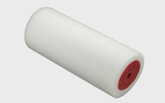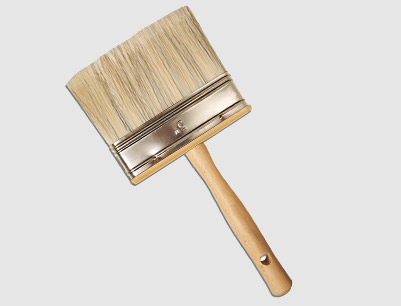Foam Paint Rollers: Transforming the Way We Paint in 2025
Nov. 24, 2025In the fast-evolving world of DIY home improvement and professional painting, Foam Paint Rollers have emerged as one of the most essential tools for achieving smooth, even finishes. Unlike traditional fabric rollers, foam rollers are designed to minimize texture, reduce splatter, and maximize paint coverage. As homeowners and painting professionals alike seek efficiency and precision, foam rollers are quickly becoming a go-to choice across multiple painting applications.
What Are Foam Paint Rollers?
Foam paint rollers are cylindrical rollers made primarily of polyurethane foam. Unlike traditional nap rollers, which rely on fibers to hold paint, foam rollers absorb and release paint more evenly across flat surfaces. This feature makes them ideal for smooth surfaces like doors, cabinets, furniture, and walls that require a flawless, brushstroke-free finish.

Advantages of Using Foam Rollers
Smooth, Professional Finish: Foam rollers are designed to minimize streaks and roller marks. When used correctly, they can create a near-airbrush quality finish that is highly sought after for cabinetry, trim, and furniture painting.
Reduced Paint Waste: The absorbent nature of high-quality foam allows for better paint distribution, reducing excess drips and splatters. This not only saves material costs but also simplifies cleanup.
Versatility Across Paint Types: Foam rollers perform well with latex, enamel, and oil-based paints, making them suitable for a wide range of projects. Specialized foam rollers are also available for varnishes and primers, allowing professionals to switch between tasks without changing tools extensively.
Ease of Use for DIY Enthusiasts: Even novice painters can achieve a smooth finish with minimal effort. Foam rollers are lightweight, easy to maneuver, and require less pressure compared to traditional fiber rollers.
Applications Driving Popularity
Cabinet Painting: In kitchens and bathrooms, foam rollers are the preferred choice for cabinetry because they provide a scratch-free, high-gloss finish.
Furniture Refinishing: DIY enthusiasts and furniture professionals alike use foam rollers for refurbishing wooden chairs, tables, and shelves.
Interior Walls and Ceilings: For smooth drywall surfaces, foam rollers create a uniform look without texture, ideal for modern minimalist interiors.
Artistic and Decorative Projects: Smaller foam rollers allow for precision painting, stenciling, and specialty finishes in craft and art projects.
Innovations in Foam Roller Technology
The paint tool industry has seen significant innovation in recent years. Modern foam rollers now come with densely-packed cells, ergonomic handles, and anti-shed designs that enhance durability and ease of use. Some rollers are even infused with micro-groove technology, which allows for superior paint pickup and release. Eco-conscious options are also emerging, including rollers made from recycled foam and biodegradable materials, appealing to sustainability-minded consumers.
Market Trends and Growth
According to industry reports, the global foam paint roller market has experienced steady growth due to the rise in DIY home improvement projects, coupled with the expansion of professional painting services. The demand is particularly strong in North America, Europe, and Asia-Pacific, where home renovation and real estate markets are booming. With increasing consumer awareness of paint efficiency and high-quality finishes, foam rollers are positioned as a critical tool in both residential and commercial painting projects.
Choosing the Right Foam Roller
Selecting the ideal foam roller depends on surface type, paint viscosity, and desired finish. Key considerations include:
Density of the Foam: High-density rollers are better for smooth surfaces, while lower-density rollers work well with textured paints.
Roller Size: Wide rollers cover large areas efficiently, while mini rollers allow for detailed work in tight corners.
Core Material: Durable cores, often made from plastic or composite materials, prevent distortion and ensure even pressure during application.
Expert Tips for Best Results
Always use light, even pressure to prevent streaking.
Avoid overloading the roller with paint to reduce drips.
For glossy finishes, apply multiple thin coats rather than one thick coat.
Clean foam rollers immediately after use to prolong their lifespan.
Conclusion
As painting technology evolves, foam paint rollers continue to redefine efficiency and quality in the painting world. Their ability to deliver smooth finishes, reduce waste, and simplify both professional and DIY projects makes them an indispensable tool for anyone looking to achieve top-tier results. With ongoing innovations and rising consumer awareness, foam rollers are not just a painting accessory—they are a symbol of precision, convenience, and modern painting excellence.















